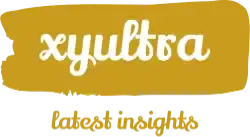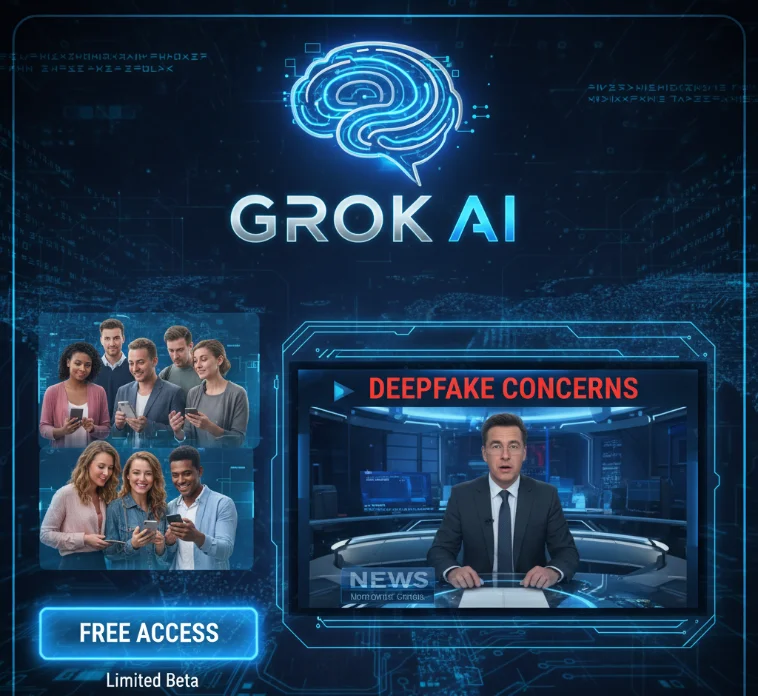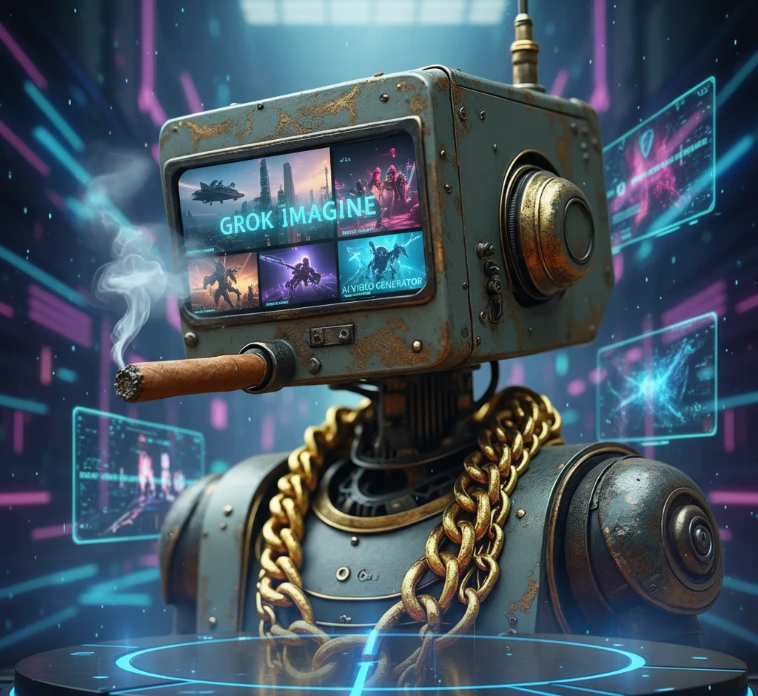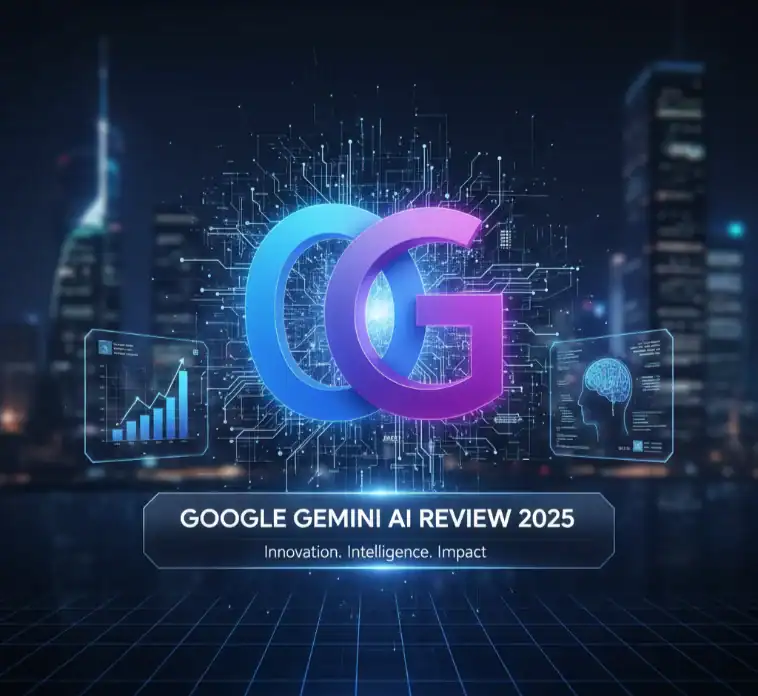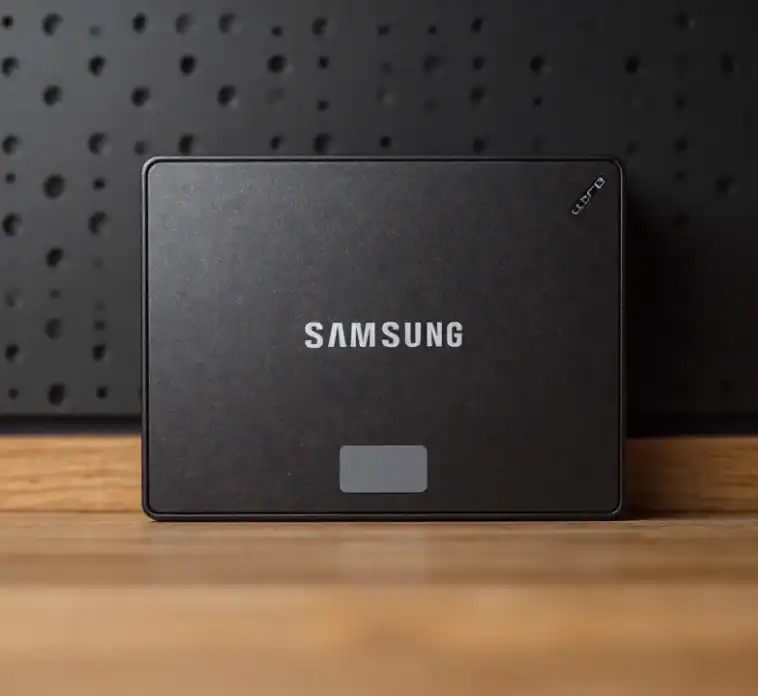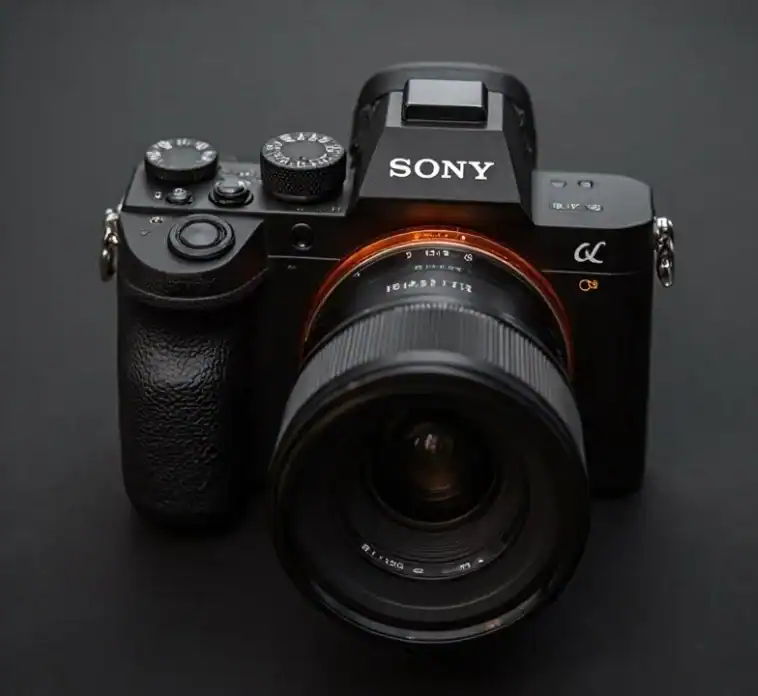You know how AI keeps getting more advanced? Well, Elon Musk’s company xAI just dropped a bombshell with their latest Grok Imagine video generator update. Version 0.9 is now out, and here’s the kicker – it’s completely free for everyone. No subscription needed, no premium membership required. It’s as simple as just opening it and starting to make videos.
However, before you become overly excited, the story has its downside. While it is extremely good to have free access to next-generation AI video technology, the situation gets a little uncomfortable when you look beneath the surface. We are talking about the use of AI that can fabricate videos where people are shown doing or saying things they never did or said with high precision of visual and audio aspects. Moreover, in contrast to other AI platforms that always provide certain restrictions in order to avoid misuse, Grok Imagine appears to be quite the opposite.
Try to imagine the scenario for a moment. It is already difficult enough to tell whether a video is real or fake, given that we live in such an era. And now, the difficulty of verification becomes exponentially harder once the ability to produce a realistic deepfake within seconds is at the fingertips of anyone with an internet connection. That is how this release positions us.
The situation with technology actually mirrors a bigger debate, a couple of which are closely related to the tech industry. Firstly, there are companies like OpenAI and Google that are very cautious and selective about who gets access to their video generation tools. They are applying very strict control measures and content filtering. Secondly, there’s Elon Musk, claiming these prohibitions are excessive and saying that Grok is more like “free speech” in the sense of not being limited. The point is? This tech becomes a malicious tool if it is not accompanied by boundaries that can assassinate character, accelerate the propagation of falsehoods, and intimidate people on a large scale.
Well, the thing is, we find ourselves at this very odd junction where the question of whether we need to put the brakes on and think about the consequences keeps getting bigger, even though innovation is racing ahead. Should this kind of powerful technology be in the hands of everyone without any restrictions? Or would we need some fundamental guidelines that exist just for stopping the obvious wrongdoing? That’s what we are struggling with right now.
What Are the Unique Aspects of Grok Imagine Version 0.9

Let me break down what’s actually new here. The biggest change is audio support. Earlier versions could only make silent videos, which honestly looked kind of weird. Now you can add custom speech and make your characters say whatever you want. The voice synthesis is something. The voice synthesis, in fact, is the one thing on the list of technologically flawless achievements that one might appreciate—it is very close to the natural, and the mimicking of the human face is especially precise.
They, in fact, didn’t merely raise the frame rate from 16 to 24 frames per second; they doubled it. Though it may not be very remarkable, this is precisely the distinction. The videos are not choppy and look more like the ones made by professionals, similar to techniques used in creating explainer videos. You don’t get that slightly choppy feeling anymore.
But here’s the real game-changer: xAI removed all the access barriers. Before this update, you needed to be an X Premium subscriber or SuperGrok user to even try Grok Imagine. Now? Anyone can jump in and start creating videos immediately. No payment, no waiting list, no verification process. Just pure, unrestricted access to a powerful AI video generator.
Grok Imagine Versus OpenAI Sora 2
The timing here is pretty interesting, don’t you think? OpenAI just launched Sora 2 a few days before Grok Imagine got this massive update. But here’s where things get different: Sora 2 is still invite-only. You can’t just sign up and start using it. OpenAI is being careful about who gets access.
Speed-wise, Grok Imagine absolutely crushes the competition. We’re talking about generating videos in literal seconds. While Sora 2 is still processing, it can only generate such content in a minute or two. Therefore, if the turnaround times matter to you, then you are quite right to give them a big thumbs up.
The difference in the ways is so different that it couldn’t be any more different. Most AI companies rolling out video generation tech are keeping things locked down tight. They’re verifying users, monitoring content, and implementing safety measures. Musk’s strategy? Letting everyone in is the same as opening the gates wide. It’s daring but also very dangerous.
Testing Grok Imagine Video Generation Capabilities
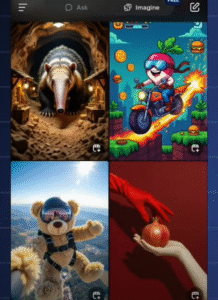
Okay, so I decided to actually test this thing out myself. Started simple – asked it to make videos of animated animals chatting with each other, a Tesla racing against F1 cars, and a happy dog bouncing around. The results were honestly pretty solid. The visuals looked good, the movements were smooth, and everything worked as advertised.
Then I tried the speech feature with something innocent – an Ice Princess character. Added some silly dialogue using the new Speech option from the dropdown menu. It nailed it. The voice sounded good, the timing was right, and everything flowed naturally.
But here’s where my eyebrows started raising. I wondered: what if I type in curse words? Will it refuse? Nope. The princess delivered every profane line without hesitation. No warning message, no content filter, nothing. Just straight-up generated whatever I asked for.
That got me thinking about bigger problems. If it’ll do that with a fictional character, what about real people?
Creating Videos of Public Figures Without Restrictions

This is where things get seriously concerning. I tested whether Grok Imagine would let me create videos of actual political leaders and celebrities. Spoiler alert: it did. Without any pushback whatsoever.
I made videos of President Donald Trump saying random lines I typed in. The AI generated his likeness convincingly, complete with synthesized speech that genuinely sounded like him. The voice had his cadence, his tone – it was almost scary how realistic it came out.
Just to see how far this goes, I tried making a video of Elon Musk himself at a far-right rally saying inflammatory things. Again, Grok didn’t refuse. It just… did it. Created the video, generated the speech, no questions asked.
Compare that to what happens when you try similar requests on ChatGPT or Google Gemini. Those platforms shut you down immediately. Their safety systems recognize when you’re trying to create misleading content about real people and flat-out refuse the request. They understand the difference between creative expression and potential harm.
Grok Imagine? It’s got no such boundaries. The door is wide open.
The Spicy Mode Problem
Now we need to talk about something really troubling: Spicy mode. This feature removes even more restrictions and lets users generate explicit or suggestive content. And yes, it works with recognizable people too.
Within seconds, you can create images and videos of actual celebrities in revealing situations. The apparatus prints their images in revealing clothes and with exaggerated characteristics. This is a disturbingly simplistic approach to fabricating a deepfake that can seriously harm someone’s reputation or be used for abuse purposes.
Just ponder over the practical implications of this. Theoretically, any person who is angry at a celebrity, a politician, or even an ordinary person who has gotten some public attention can now fabricate explicit non-consensual images of them. That’s not just unethical – in many places, it’s literally illegal.
We’re talking about technology that enables harassment at an industrial scale. The barrier to creating this harmful content has dropped to basically zero. No technical knowledge, no expensive software, and all you need is the internet and evil thoughts.
Deepfake Risks and Societal Impact
Let’s change the angle and analyze the total picture. With photorealistic video, credible voice synthesis, and complete ease of access, you get the optimal grounds for deepfakes becoming viral.
Here’s a scary thought: take one of these generated videos, compress it down to a lower resolution, and post it on Facebook or X. A lot of people scrolling through their feeds won’t look closely enough to spot that it’s fake. They will witness what looks like a genuine video of a politician or a celebrity, and thus will not suspect anything other than taking it as the truth.
Political misinformation just became exponentially easier to produce. It can be compared to an election season. Comparatively, there are videos with candidates that absurdly present their thoughts, though they have never spoken like that. While the fact-checkers are in the process of discrediting them, the fake videos have, by that time, “exploited” their impact. They have become widely disseminated and have altered people’s perceptions.
Celebrities and public figures are among the first to suffer from the new grim scenario. Anyone can now create videos showing them doing or saying anything imaginable. What would be your defense against it? What proof do you have that you haven’t said it if the forged video is identical to you both visually and audibly?
But the damage goes even deeper than individual harm. When deepfakes become this common and this convincing, people start doubting everything. Real videos get dismissed as potential fakes. Actual evidence loses its power. Basically, the whole idea of “seeing is believing” is no longer valid, and we lose one of the most effective means to keep people in check.
Understanding Elon Musk’s Free Speech AI Philosophy

To be fair, Musk has been pretty consistent about his vision here. He genuinely believes that mainstream AI platforms are too restrictive. He’s criticized ChatGPT and others for having what he sees as excessive content moderation and built-in political biases.
His whole pitch for Grok is that it’s the alternative for people who want maximum freedom. Whether it’s his ownership of X or his development of AI tools, the philosophy stays the same: less control, more open expression, let people decide for themselves what’s acceptable.
I really see his point, to be honest. There are valid worries about AI companies that are so powerful that they might be the ones deciding what people can say or create. Nobody wants a handful of tech executives controlling the boundaries of acceptable speech.
But here’s the thing: absolute freedom without any boundaries creates real opportunities for harm. When you hand people tools that can destroy reputations, spread disinformation, and harass individuals at scale, some people will absolutely use them that way. That’s not hypothetical – it’s inevitable.
Why Some Content Restrictions Remain Necessary
One thing to keep in mind is that free speech is necessary, a fact that nobody argues. The strictest freedom of speech proponents also acknowledge that some restrictions are in place. We have laws that prohibit defamation, harassment, and fraud because words and images can cause harm to people in the same way as other things.
AI video generation takes those concerns and amplifies them to a whole new level. In the past, creating convincing fake videos required serious technical expertise and significant time investment. You needed to know your way around professional editing software. Now? Anyone can do it in seconds.
Other AI companies have proven that you can build powerful, useful tools while still maintaining basic safety measures. ChatGPT and Gemini are super-powerful AI systems. They can do almost anything, from helping with your creative projects to answering a complex question to generating code and more, but they cannot make intimate non-consensual images or obvious misinformation.
That’s not a technical limitation – it’s a deliberate choice. The same technology that powers Grok Imagine could easily include checks for recognizable individuals or filter out requests for harmful content categories. xAI chose not to implement those safeguards.
Legal Implications for xAI and Users
Here’s something people need to understand: creating certain types of deepfakes can land you in serious legal trouble. Several states, such as California, Texas, and Virginia, have already enacted legislation that targets non-consensual deepfake content specifically.
At the federal level, Congress is drafting laws that would set national guidelines for AI-generated content. Some of the proposed bills aim to make the creation of malicious deepfakes one of the criminal offenses.
In the case of xAI, the issue of liability is genuinely present. Yes, the Section 230 protection basically can keep the platforms out of the line of fire when it comes to user-generated content. On the other hand, you might be going beyond those protections if you intentionally design a tool that bypasses the basic safety measures, and illegal content creation becomes effortless.
Moreover, if you are a user who makes deepfakes, you are the one who is legally responsible for what you produce. You can be indicted and sued for criminal and civil law, respectively. The digital forensic techniques and platform logging can identify the creator even if you assume that you have done it anonymously.
At first glance, the creation of a fake video of a real person might appear to be a joke with no real harm done, yet the legal side of it can have a harsh impact that lasts for a long time.
What Users Should Consider Before Using Grok Imagine
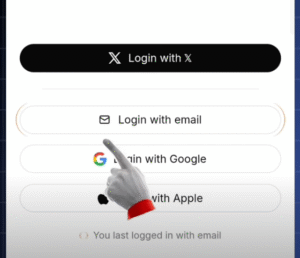
If you are not ready to take off really crazy experiments, think about ethical and law issues first. The thing is that sometimes one should refrain from doing something merely because one can.
Producing realistic videos of recognizable people without their consent is not merely an ethically dubious act – it can also breach laws and terms of service. The content may seem to be innocent or funny, but it can still hurt the person’s reputation or emotional well-being without realizing it.
Well, don’t think that you are completely untraceable. For instance, if you have anonymously shared some content, there are always some forensic tools that can find your source. Even platform logs, metadata, and other digital breadcrumbs may keep evidence of who did what.
Don’t forget to consider their broader impact as well. Every manipulated video that gets circulated is an additional brick in the wall of a bigger problem – the loss of trust in digital media. Individual choices to create or spread fabricated content add up to a society where nobody knows what’s real anymore.
Alternative AI Video Tools with Responsible Guardrails

If you’re interested in AI video generation but want to use tools that have ethical safeguards in place, several good options exist.
OpenAI’s Sora 2 produces impressive results within a more controlled framework. Well, the access is still quite limited, though, but this is basically what they are after. They are going about the unveiling and the implementation in a very cautious manner.
Runway ML offers professional-grade video editing and generation capabilities. They’ve implemented content policies that prevent obvious misuse while still giving creators plenty of room for legitimate artistic expression.
Google’s Veo video model is still in limited testing, but early signs suggest they’ll include robust safety measures before any wider release.
Such platforms demonstrate that creative potential need not be compromised to maintain ethical boundaries. Responsible AI development is the kind of work that strikes a balance between functionalities and safeguards.
The Future of AI Video Generation Regulation

Industry self-regulation is frankly not sufficient. Standards of different AI companies for what is acceptable can be very different, and the voluntary commitments may vary a lot in the degree of their seriousness.
It seems that after some time, the government will have to step in to assist. The AI Act in the European Union is such a step, and it is already defining the boundaries for AI-generated content and deepfake technologies.
Maybe technical solutions can also play a part. Authentic media with content authentication systems that come with verifiable metadata can make it quite simple to differentiate the real from the generated ones. It is akin to a digital watermark that is proof of authenticity.
Nevertheless, public education is the strongest defense that we have. People need to be equipped with knowledge on deepfakes and have an understanding of the signs of synthetic media so as to be able to spot them. Critical evaluation skills become necessary when you cannot rely on what you see by default.
Frequently Asked Questions
What is Grok Imagine?
Is Grok Imagine free to use?
How does Grok Imagine compare to Sora 2?
What is Spicy mode in Grok Imagine?
Can Grok Imagine create deepfakes of real people?
Does Grok Imagine have content safety filters?
Is creating deepfakes with Grok Imagine legal?
Why did Elon Musk make Grok Imagine so unrestricted?
Conclusion
Grok Imagine version 0.9 represents an impressive technical achievement in AI video generation. The speed, quality, and accessibility of the platform demonstrate how rapidly this technology continues to advance.
However, the absence of meaningful content restrictions creates serious problems. The capacity to create compelling deepfakes of any public figure without their consent or verification is what opens the doors to harassment, defamation, and misinformation on a scale never seen before.
Free speech absolutism, as advocated by Elon Musk, will get its most discriminative trial exactly with this release. What is going to happen in the next months is that we will get to see whether xAI is going to be hit by the legal troubles, get the backlash from the users, or be greeted with the regulatory intervention because of its security approach towards AI.
Even systems that have open access as the primary goal need some level of content moderation. Just safeguarding people from the production of non-consensual intimate imagery and stopping the most apparent kind of fraud, in no way, opposes the right of creative expression.
The AI sector should maintain a united front in handling these issues. With the improvement in generation capabilities, the demand for the implementation of cautious guardrails becomes more apparent. The use of technology that frees the user’s creative power should not be equivalent to that which allows the abuse of the arts.
